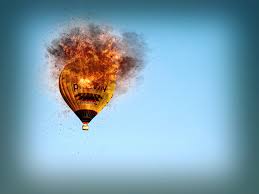Related: Bank ETFs Get a Federal Reserve Boost
The subprime scare wasn’t enough to immediately impact the market, as the S&P 500 continued to rally (with confidence in Bernanke) and finally recaptured its 2000 high in September 2007.
However, traders’ “S&P 1500” hats were put away as quickly as they’d been dusted off, as the market began falling in late 2007 and then continued to drop by more than 50% in the next year.
An Era of Free Money
Extraordinary times require extraordinary measures. By January 2009, the Fed had aggressively dropped rates from 5.25% to 0%. This is also known as the zero lower bound, or ZLB.
The ZLB ushered in an era of free money and an assortment of kabuki dances, also known as quantitative easing (QE).
In these abstract monetary experiments, started under Bernanke and continued under Janet Yellen, the Fed purchased longer-dated Treasurys, mortgages and corporate bonds. This was an effort to force investors (namely, pension funds and insurance companies) to search for more yield, thereby reflating stock, bonds and housing prices.
In finance, another way to say “search for more yield” is “take more risk.”
For the past decade, the Fed’s monetary policy has been the only game in town — inflation has been benign, and the economy has been sputtering along at around 2% growth. Any bears who fought the Fed were eventually steamrolled by rising asset prices.
Investors developed cute acronyms like TINA (“there is no alternative”) to justify purchasing stocks. At a price-to-earnings (P/E) ratio of 31, the S&P 500 is at the highest Shiller P/E since 2000, or the most overvalued.
From the March 2009 bottom, the S&P 500 gained nearly 400%. There’s been nothing to worry about because the Fed has your back.
When complacency reigns supreme, it’s time to start worrying about stocks.
The Bottom Line for the Federal Reserve
The latest round of QE ended in late 2014, and the Fed now controls $4.5 trillion in assets. On top of that, rates are finally off the lower bound and headed higher. The fed funds target is now 1.62%, with two more hikes expected in 2018.
If history is any guide, the last two rate-hike cycles in 2000 and 2004 to 2006 eventually brought about 50% stock market corrections.
With an overvalued market and potential trade war brewing, why will this time be any different?
Or as Mark Twain once quipped: “Whenever you find yourself on the side of the majority, it is time to pause and reflect.”
This article has been republished with permission from Value Walk.

